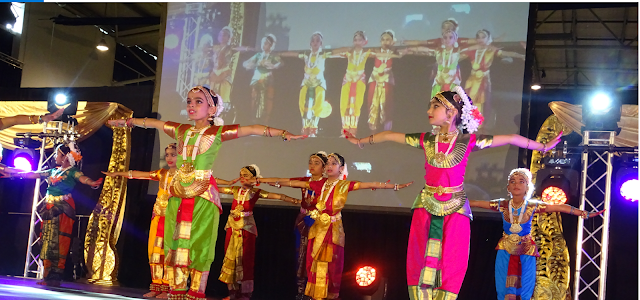THE FIJI
TIMES 152nd ANNIVERSARY – PART 1
WHEN FT
DESPISED INDIANS AND SHAMED MEDIA AS A LAP
DOG OF WHITE COLONISTS & ELITES
Thakur
Ranjit Singh
PROLOGUE - PART 1
This is a four-part series of articles on the
history of the Fiji Times, from already published articles and my research as Master’s
Thesis, and never told in this manner and language.
The Fiji Times (hereafter referred to as “FT”) just made a big noise and celebrations about its 152 years in Fiji and praised and commended itself for its achievements.
Many, especially Fiji-Indians in
Fiji and around the world (Diaspora) may have also clapped but failed to know
what FT failed to tell and do as the oldest Fourth Estate in Fiji, which for the
most part, despised Indians.
Those who studied journalism and seen research on FT would know how it shamed journalism, the Fourth Estate, as the media is referred to. The Government comprises three arms: executive, legislative and judiciary . These three arms of government do everything necessary to maintain law and order in the state.
And media is an additional important and responsible arm to keep a check on
these three and therefore referred to as THE FOURTH STATE.
DISCLAIMER: All reference
to FT is to the foreign-owned paper before localisation in 2010. Hence I do not
have any concerns with the 2021 FT. If anything, the Fiji Times of today may be
one of the media which stands tall as a respectable Fourth Estate and pride to
journalism in Fiji in very trying times in 2021 where the three arms of the
government appear to be all muddled up and muddied together.
INTRODUCTION
The Fiji Times just marked 152nd
anniversary as they came to Fiji in 1869, 10 years before arrival of first
indentured Indian labourers (Girmitiyas) from India. Many atrocities, violence,
injustice, breach of human rights and inhumane activities were imposed on these
vulnerable illiterate people from India. Yet, the paper never exercised it role
of the Fourth Estate or its responsibility of journalism to report facts
neutrally, impartially, diligently, and fairly. If anything, they became
mouthpiece of the British and Australian colonists and degraded these helpless
and defenceless people.
What appears to be missing is for any children of Girmit to stand up
and reveal all the ills of a White foreign media that rarely stood up for their forebear
Girmitiyas, and neither for them nor their children till early 21st century. Hence FIJI PUNDIT
chose to fill the vacuum, as a duty to my voiceless Girmitiyas who were never
able to defend themselves.
THE FIJI TIMES - PART 1 (OF 4)
So, let’s begin. We begin by a research by Padmini Gaunder at Auckland University in
2006. Through historical perspectives, she revealed how FT generated animosity
and tension between the major ethnic groups, leading to ethnic conflict. She
rightfully stated that FT was the only paper for over a century, and it used
its position early to shove a wedge
between the races and appeared to represent the ruling class and the elites.
She said:
This newspaper represented the views and interests of a
small group of vested European commercial interests in the country and
deliberately caused ethnic divisions by influencing the perceptions of
indigenous Fijians towards the immigrant Indians. The newspaper helped to
implant fear in the minds of the indigenous population of domination of the
country by the immigrant community. This fear led to suspicions and slowly it
caused tensions and finally ethnic conflict.
Gaunder states that the racial
divisiveness of the newspaper appeared to have been founded in the history of
FT:
The Fiji Times had started its anti-Indian propaganda in its
very early days itself, during the indenture period in the colony
(1879-1920).Throughout the indenture period, there was often violence in the
cane fields, resulting sometimes in murders of the overseer by the labourers.
The Fiji Times invariably described these incidents as cold-blooded murder and
depicted the Indians as a mysterious race of criminals to whom violence came
naturally.
In fact what FT failed to mention and conveniently omitted
was that in most cases, the violence was provoked by the overseers, and this
may be verified by anecdotal oral (verbal) literature from our Girmitiyas who told us
tales of such injustices, brutalities, and violence. This is well documented in
Rajendra Prasad’s TEARS IN PARADISE.
Tears
in Paradise – Suffering and Struggles of Indians in Fiji 1879-2004 reveals the horrific treatment of Indian
indentured workers (Girmitiyas) in Fiji by the British from 1879-1919.
Indenture system (Girmit) under which they were recruited was slavery by
another name. Working and living conditions were so atrocious that Fiji had the
highest rate of suicide in the world and highest rate of infanticide among the
colonies that deployed indentured labour. Yet none of these made it to the
pages of FT because of their selective and racist journalism, which tarnished
Fiji Indians as smelly, dark-skinned invaders.
Until 1920, the white settlers regarded Indian and Fijians
(Fijians refer to Itaukei) as dark-skinned people who were inferior to white
settlers. It was only after 1920 and 1921 strikes by Indians that they
befriended the Itaukei and started turning them against the Indians.
The Fiji Times became their main tool for conveying this
pro-Fijian/anti-Indian stand. It deliberately disseminated, through headlines,
news stories, letters to the editor and editorials news about Indians that
would cause unease in the minds of the Fijians.
A historian and acknowledged author on early Indian history in Fiji,
Dr. K. L Gillion noted similar racial slurs in FT of those early years against
Fiji Indians. Citing an incident in 1922 when an Indian deputation was visiting
Fiji, the following letter appeared in the then Fiji Times and Herald of 1 March
1922:
I would say that 99 per cent of the Europeans in Fiji and
the Fijians are loyalists and the handing over of Fiji to evil-smelling,
treacherous, non-educated, garlic-eating Indians would be one of the greatest
crimes in the history of the British Empire and an event which would possibly
meet with some opposition.
Gillion (1977) also recorded instances when the newspaper called for deportation of Indian leaders to India, used derogatory words against Indians, was accused of reinforcing “apprehension about Asian penetration of the South Pacific” and expressed contempt on celebrating jubilee, in 1929, of the arrival of the first Indian settlers and declaring of 15 May as a public holiday. (Even Frank Bainimarama and Fiji First Government is struggling with request of Fiji Girmit Foundation NZ of 2015 to declare Girmit Public Holiday, almost a century after when FT initially opposed it. It seems we have progressed very little, and still waiting for that to become a reality.)
In the issue of January 29,
1929, The Fiji Times and Herald wrote:
Fiji does not require
permanent settlers of the Indian type. Her lands, her climate are for Europeans
who can employ what labour they require.
These set tones of racial slant of FT. Things do not appear to have changed in some fourteen decades of its presence in Fiji. The newspaper was established in Fiji in 1869 – exactly ten years before the arrival of the first Indian indentured labourers from India. These helpless labourers went through grave brutalities and violence at the hands of British and Australian overseers, including the breach of basic human rights, and flouting of international laws that took place under the nose of a supposedly free press.
However, FT never appeared to
have taken a stand on the injustices meted out to these labourers. There have
been unreported cases about bullying, filthy plantation lines (accommodation)
where labourers were penned like animals, people broken by diseases, the beatings,
and the use of law to subjugate these people:
..…the rough young
Australian overseers… used the Indian women…the system of European dominance…
the law courts unconsciously favoured the articulate employer against the
bewildered or ignorant labourer…the Indians remembered the deceit, the
slave-driving drudgery, and the degradation and vice; the CSR, the planters,
and Europeans generally saw the Indians as coloured labour force to be kept under.
 |
Read in the other three parts how Fiji Times since Independence in 1970 became mouthpiece
of the Chiefs,(read Ratu Mara) elite Itaukei, Lauan Chiefs and rich businesses.
My second part, together with Parts 3 and 4, will reveal the truth in the adage
that leopards do not change colour and tells of the FT post-independence and
how it contributed to destabilising of democracy in Fiji , culminating in
removal of Chaudhry’s Peoples Coalition government in May 2000.
[About the Author: Thakur Ranjit Singh is former publisher of now closed, partly government-owned Daily Post newspaper, a journalist, a media commentator, a community worker in Auckland and runs his blog FIJI PUNDIT. He did a research as part of Masters in Communication (MCS) thesis at Auckland University of Technology (AUT) in 2011. This was on the role of the Fiji Times in contributing to destabilising of democracy by a partisan media that culminated in Speight’s attempted coup in 2000. Details in the articles are largely from his thesis titled: THE 2000 SPEIGHT COUP IN FIJI: THE ROLE OF THE FIJI TIMES LEADING TO POLITICAL INSTABILITY.
E-mail:thakurjifj@gmail.com.]
Link to thesis:
https://openrepository.aut.ac.nz/handle/10292/2554
















